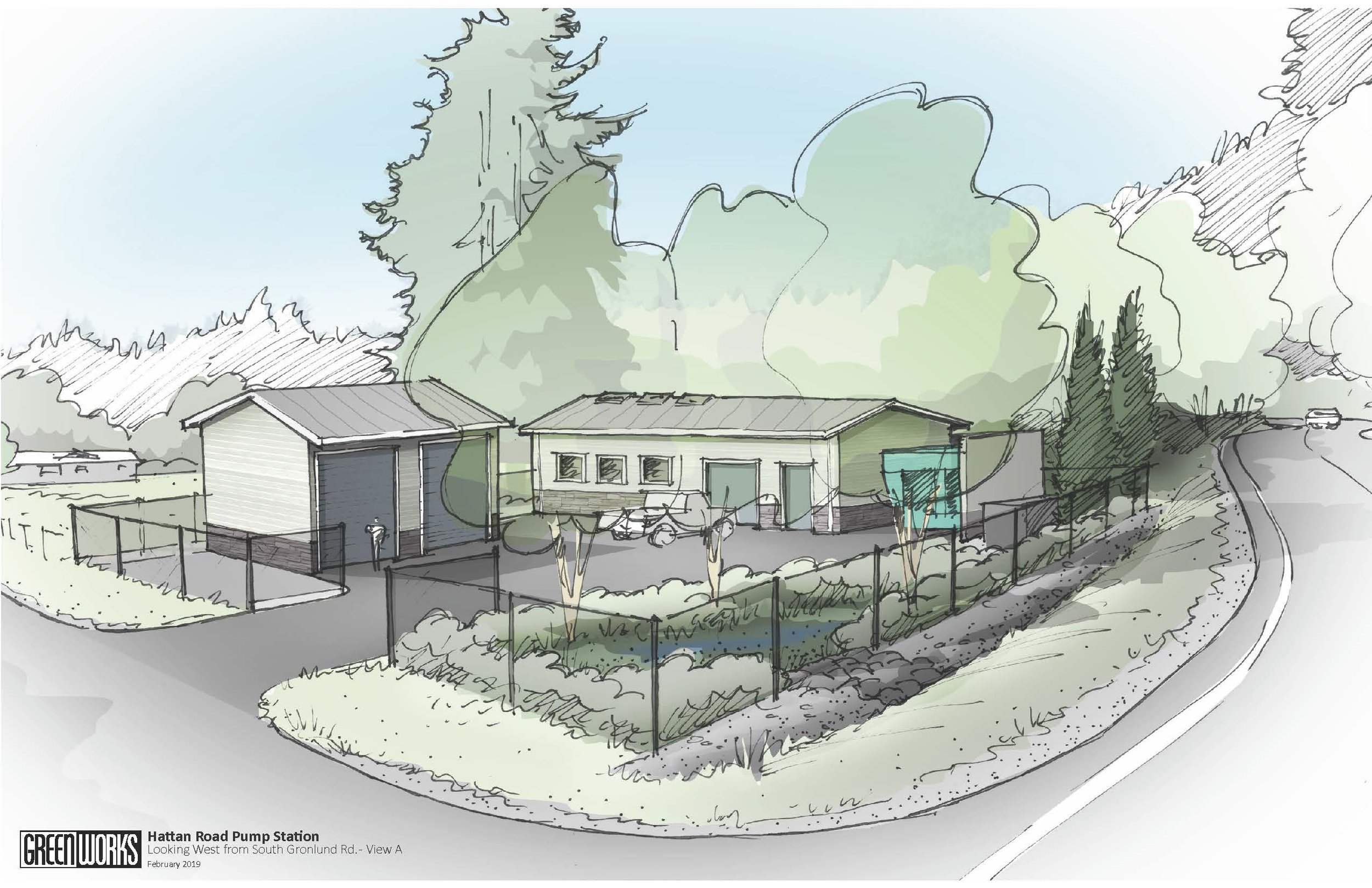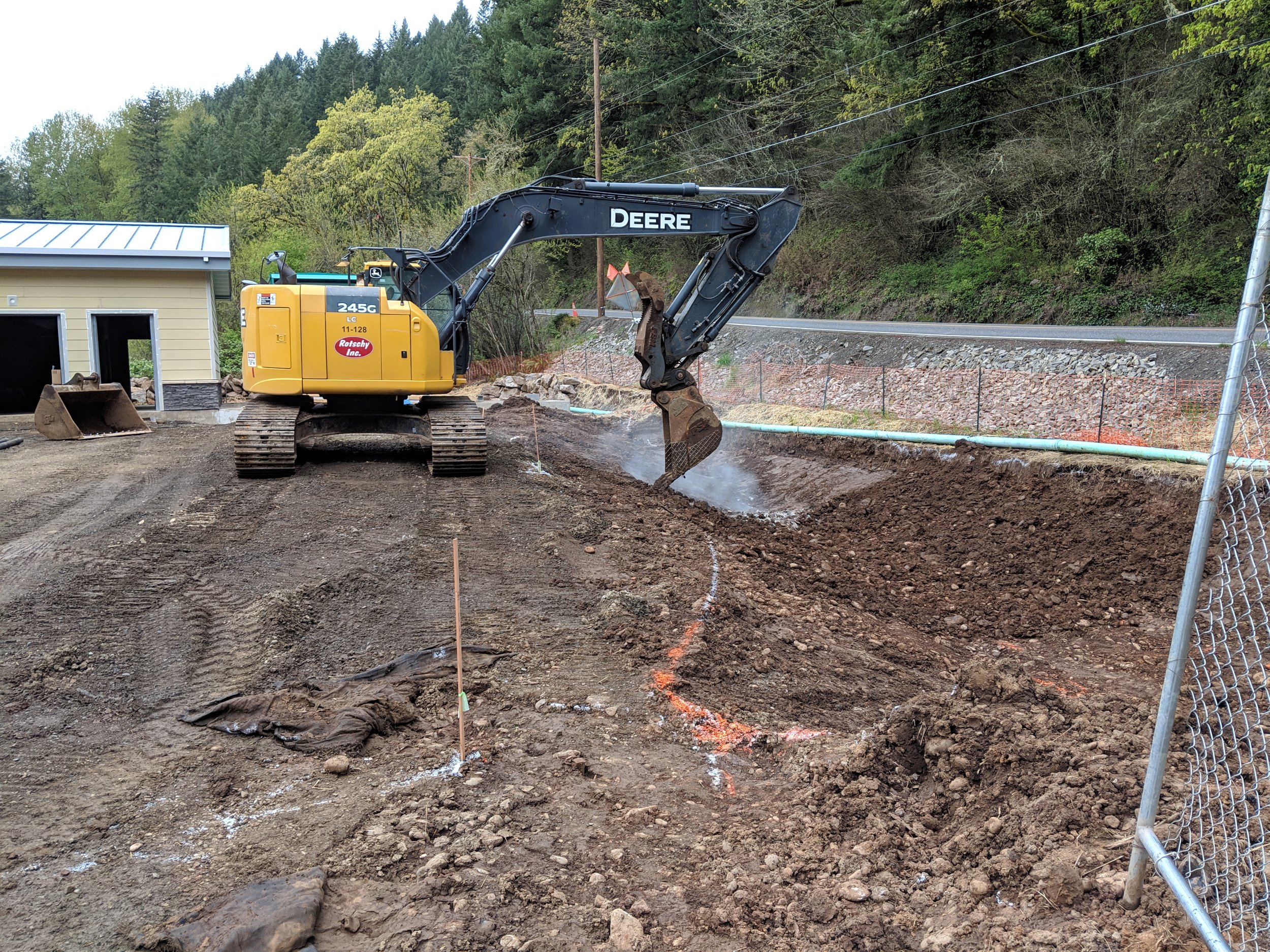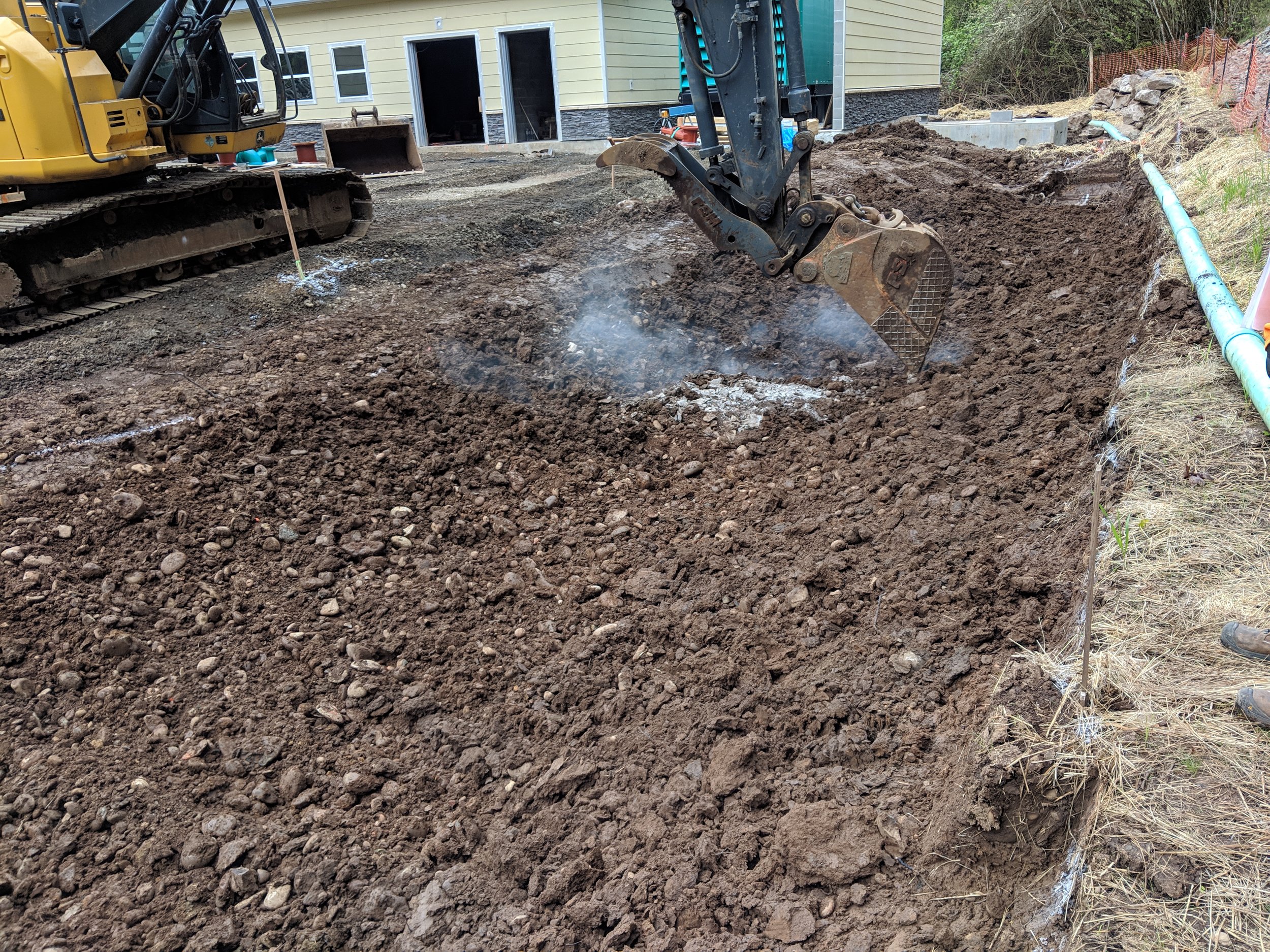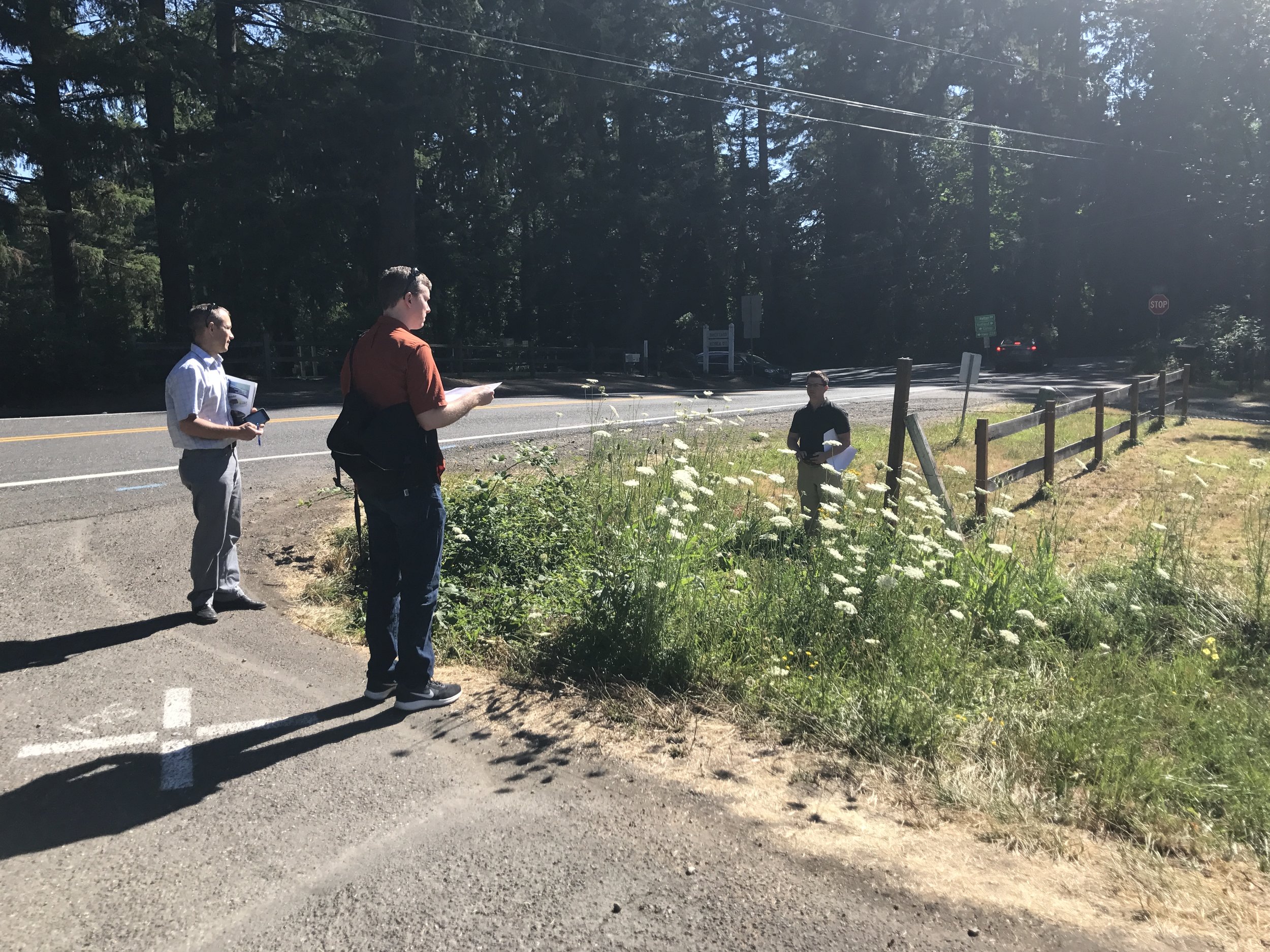Soil Scarification from Design to Construction
/This post is a contribution from GreenWorks Landscape Architect Wes Shoger.
Scarification, it’s one of the most important things related to soil preparation in our work. It’s the process of breaking up soil by fracturing or tilling it. The USDA defines it as:
“The tilling or ripping of the soil across the slope using farming or construction equipment. The purposes of this treatment is to loosen and mix the soil profile in order to create a better seedbed, improve infiltration, and where present, reduce any hydrophobic characteristics that may have developed as a result of the fire. It can be done may ways, depending on the size of the project.”
Work being done on a site causes soil compaction. The structure of the soil–the gaps and holes formed, the arrangement of soil particles allowing for water and air exchange–is damaged. Without easing the compaction, plants won’t be able to thrive and water will not drain, causing flooding.
Scarification is how we rectify this problem. It can be done before new soil is brought in or done in-place, when materials are added on top of existing soil to make it healthier. Regardless of the method used to strengthen soil, the important takeaway is that scarification makes the soil healthier because the subsoil is loosened a few inches below the new planting soil.
Sometimes clients or contractors will ask us to visit a site we’ve designed and observe this construction process directly, as they did when we took the video above. It’s from the Hattan Road Pump Station, a project under construction now in Oregon City. This video shows an area of the site where a stormwater facility is being installed, so infiltration of water is obviously important. The contractor, Rotschy, Inc., used the deep-toothed bucket of an excavator to "scrape" the underground soil and loosen it, to scarify it. A specially blended stormwater soil will eventually be imported and installed. The contractor did a great job making sure this process was done and conducted properly.
Wes Shoger has worked on a wide range of projects in size and scope, including streetscape design projects, green infrastructure, neighborhood parks, play areas, and natural areas. He specializes in conceptual design for parks and open spaces, irrigation and planting design, stormwater facility planning and design, construction detailing, streetscape design, as well as hand and digital graphic communication.







